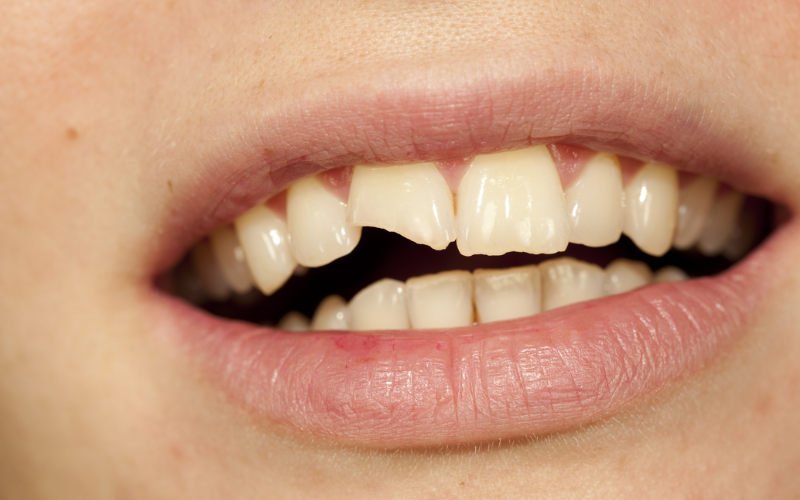8092 Edwin Raynor Blvd # D, Pasadena, MD 21122

Traveling opens up a world of adventure, but it can also bring unexpected challenges. Dental emergencies while you’re out of town can turn a dream trip into a nightmare. Imagine dealing with a sudden toothache or a broken tooth while far from home. It’s stressful, and knowing what to do can make a huge difference.
In this guide, we’ll walk you through the essential steps to handle dental emergencies away from your familiar dentist. From assessing the severity of your situation to finding local dental care, we’ll provide you with practical tips and advice. Stay calm, be prepared, and ensure your trip remains enjoyable even if dental issues arise. Whether you’re on a business trip or exploring a new city, having a plan in place will help you manage any dental mishaps effectively.
Assessing the Severity of Your Dental Emergency
When faced with dental emergencies while traveling, the first step is to assess the severity of the situation. Is the pain mild, or is it unbearable? Are you experiencing swelling or bleeding? Understanding the seriousness of your symptoms can help you decide on the appropriate course of action.
- Mild Pain: If you have minor discomfort, it may be manageable with over-the-counter pain relievers and avoiding hard or sticky foods. Keep an eye on your symptoms, and seek professional help if they worsen.
- Severe Pain or Bleeding: Intense pain, swelling, or bleeding indicates a more serious issue. These symptoms may suggest an infection, a cracked tooth, or other conditions requiring immediate attention.
- Loss of a Tooth: If you lose a tooth, try to keep it moist by placing it in milk or a saline solution. Seek dental care as soon as possible to increase the chances of saving the tooth.
Assessing your situation accurately ensures you take the right steps to address your dental emergency efficiently.
Finding Local Dental Care
Once you’ve assessed your situation, finding local dental care is crucial. Start by checking your travel destination’s local directory or using a smartphone app to locate nearby dental offices. Here’s how to find the help you need:
- Search Online: Use search engines to look up “emergency dentist near me,” or if you are at a particular location, for instance, Pasadena, MD, search for “emergency dentist in Pasadena, MD.” This will provide you with a list of nearby dental offices and their contact information.
- Check Reviews: Read online reviews and ratings to ensure the dental office you choose is reputable. Reviews can give insights into the quality of care and the experiences of other patients.
- Contact Your Insurance: If you have dental insurance, contact your provider to find out about coverage and find an in-network dentist. This can help reduce out-of-pocket expenses.
- Ask for Recommendations: If you’re staying at a hotel, ask the front desk for recommendations. Local hotels often have lists of trusted healthcare providers for emergencies.
Managing Pain and Discomfort
While waiting for dental care, managing pain and discomfort is essential. Here are some strategies to help you feel more comfortable:
- Over-the-Counter Pain Relief: Use medications such as ibuprofen or acetaminophen to alleviate pain. Follow the dosage instructions on the label.
- Cold Compress: Apply a cold compress to the affected area for 15-20 minutes. This can help reduce swelling and numb the pain.
- Salt Water Rinse: Rinsing your mouth with warm salt water can help clean the area and reduce inflammation. Mix one teaspoon of salt in a cup of warm water.
- Avoid Certain Foods: Stay away from very hot, cold, or sugary foods that may aggravate your symptoms. Opt for soft foods that are less likely to cause discomfort.
Taking these steps can help you manage your symptoms until you receive professional dental care.
Emergency Dental Procedures You Might Need
In some cases, you might require emergency dental procedures to address your issue. Here’s a brief overview of common treatments you might encounter:
- Tooth Extraction: If a tooth is severely damaged or infected, extraction may be necessary. This procedure involves removing the tooth to prevent further complications.
- Root Canal: For a tooth with severe decay or infection, a root canal may be performed to remove the damaged tissue and seal the tooth.
- Filling or Crown: If you have a cavity or a broken tooth, the dentist might place a filling or crown to restore the tooth’s function and appearance.
- Antibiotics: If you have an infection, the dentist may prescribe antibiotics to help control it and prevent the spread of bacteria.
Each situation is unique, so the specific procedure required will depend on the severity and nature of your dental emergency.
Post-Emergency Care and Follow-Up
After receiving emergency dental care, follow-up is crucial for proper healing and to prevent future issues. Here’s what to keep in mind:
- Follow Instructions: Adhere to any post-procedure care instructions provided by your dentist. This may include taking prescribed medications and avoiding certain foods or activities.
- Schedule a Follow-Up Appointment: If necessary, schedule a follow-up appointment with a local dentist to ensure proper recovery and to address any remaining issues.
- Monitor Your Symptoms: Pay attention to your symptoms and seek additional care if you experience worsening pain, swelling, or other concerns.
- Maintain Good Oral Hygiene: Continue to practice good oral hygiene by brushing and flossing regularly. This helps prevent complications and promotes overall dental health.
Taking these steps will help you recover smoothly and ensure that your dental emergency is fully addressed.
Preparing for Future Travel
Preventing dental emergencies while traveling requires preparation and planning. Consider these tips to minimize the risk of dental issues during your trips:
- Carry a Dental Kit: Pack a travel dental kit that includes essentials like a toothbrush, toothpaste, floss, and a small bottle of mouthwash.
- Know Your Emergency Contacts: Research and note down emergency dental contacts and locations at your travel destination beforehand.
- Maintain Regular Dental Visits: Regular check-ups with your dentist before traveling can help identify and address potential issues before they become emergencies.
- Stay Informed: Be aware of your dental health and any existing conditions that may require special attention while traveling.
Preparing in advance can help you handle any dental issues more effectively and enjoy your travel with peace of mind.
Handling a dental emergency while traveling can be stressful, but knowing what steps to take can make a big difference. By assessing the severity of your issue, finding local dental care, managing pain, and understanding possible treatments, you’ll be better prepared to handle any situation. Proper preparation before you travel can also help prevent issues and ensure you’re ready for anything. Stay informed, and you’ll navigate dental emergencies with greater ease, even when away from home.
New Patients & Emergency
Appointments Welcome!
New Patients & Emergency
Appointments Welcome!



